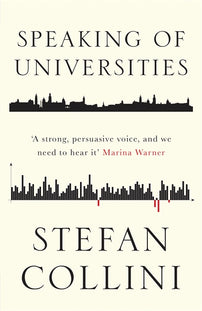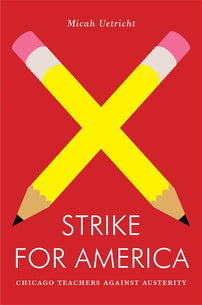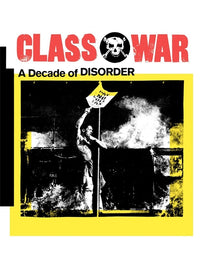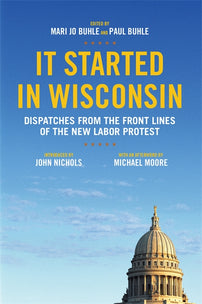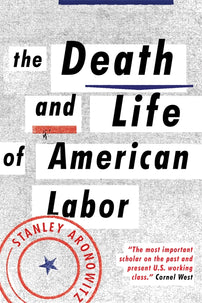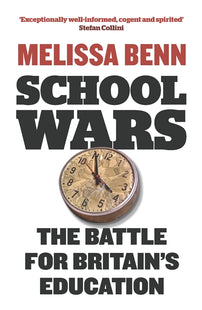The Teacher Uprising Hits the University
The recent strike wave has once again made the entire field of education a key site in the class struggle.

First published at From the River to the Sea.
The teacher uprising across America has hit the University.
This morning, hundreds of Columbia University graduate students went on strike in what could become a watershed in modern labor history.
Workers from the building trades support Columbia graduate students on the picket line. via New York City Central Labor Council, AFL-CIO on Facebook.
The students are members of UAW Local 2110, an affiliate of the United Autoworkers. A year and a half ago, after a long campaign, students voted to authorize a union for the first time in University history. The Columbia Administration however has refused to bargain with the new union. Students responded by striking near end of term just as grading was due. The student battle now, then, is not just over wages and work conditions for Columbia, but the legitimacy of the Union itself.
The strike is a potential watershed in that Columbia students voted to unionize in the wake of a 2016 National Labor Relations Board ruling that graduate student employees at private universities were employees and thus had the right to form a union. The decision reversed a 2004 decision by the NLRB which had stymied graduate union organizing, and opened up a period of widespread unionization activity in higher education. As reported by the Washington Post:
Since the NLRB ruling, teaching and research assistants at 16 private universities have filed petitions or participated in elections to form unions, according to Hunter College’s National Center for the Study of Collective Bargaining in Higher Education and the Professions.
Yet another recent example of the significance of the NLRB ruling is Harvard University, where graduate employees voted Friday to affiliate with the United Autoworkers and to form a union. The vote was the second after a long campaign to unionize. Students now hope to negotiate a new contract with the University through the union.
These are two high-profile instances demonstrating a broader trend in the past two years of militant self-organizing inside and outside of unions by graduate students and part-time faculty. For example:
– Graduate students at Georgetown University recently won the right to vote to form and join a union at their campus, forcing a reversal from the administration on the vote:
– In Illinois, University of Illinois Champaign-Urbana students recently struck for nine days to win a new contract which protected tuition waivers. Loyola University Chicago lecturers recently won a new contract after a short strike. Last November, Columbia College (Chicago) part-time faculty went on a two-day strike for better wages and work conditions. The recently formed University of Chicago student employee union recently signed its first contract.
– University of Massachusetts graduate student union recently held a sit-in over the lack of a new contract.
– Graduate students at Penn State University are currently voting on whether to unionize.
– Students at Northeastern University are battling to form a new union.
Beyond the NLRB ruling, what is responsible for this upturn?
Like their sisters in U.S. public education, graduate students, lecturers, and adjuncts have seen a continuous erosion of their wage and work conditions over the past 40 years, even as they now constitute nearly 75 percent of the teaching force in higher education. As reported by the Economic Policy Institute, graduate assistants and lecturers do more work now than ever before for universities, while rarely earning enough to constitute a living wage. They are the fastest-growing and most exploited and exploitable class of teacher in the labor market, subject to limited funding guarantees, mean benefits packages, labor impermanence, increasing student debt, year-to-year instability, late hiring notification, and oftentimes bleak job prospects after graduation. To be a graduate assistant or lecturer in the university is to live in a limbo that is permanent and indispensable.
Second, because of their diminishing work conditions, graduate employees and lecturers have been bitten by the same class conscious bug that has hit K-12 educators. Many current graduate students and lecturers are "children of 2007-2008," the year of the global economic bubble burst. This past weekend, for example, I spent time with a Ph.D. student activist at University of Michigan who told me his own radicalization began when his parents lost everything in the economic collapse of that year. Many other stories like his exist. The Occupy Movement, the Bernie Sanders campaign, the rise of the Democratic Socialists of America — many of its 181 chapters, including YDSA chapters, are on University campuses — has been part of the resurrection among graduate students and adjuncts of socialist sympathies, socialist politics, or more generally, class consciousness. As reported recently by the New York Times:
Studies suggest that young people with few memories of the Cold War embrace socialism far more than older people do. A 2016 survey of 18- to 29-year-olds by Harvard’s Institute of Politics found that 16 percent identified as socialists, while 33 percent supported socialism. Only 42 percent supported capitalism, while a majority — 51 percent — said they did not.
So what does this all mean?
– That we should continue to connect the struggles of public school teachers, graduate students, and part-time faculty, and see them as connected. K-12 Teachers of today are often tomorrow’s graduate students and lecturers. Graduate students of today are often tomorrow’s K-12 teachers. The professional symbiosis between these groups, and their shared workplace difficulties, should make them "one class" in the eyes of those discerning insurgency in the U.S. labor movement. Indeed at Penn State University graduate students seeking to form a Union have indicated a desire to affiliate with the Pennsylvania State Education Association, the Union representing K-12 teachers, and an affiliate to the National Education Association, one of the largest unions in the U.S. with a current membership of 3.2 million, making it the largest Union in the U.S.
– Similarly, we should recognize the neoliberal attacks on K-12 and higher education as one attack. Teachers everywhere face the same crisis of work conditions, diminishing wages and benefits, speed-up, disciplining, expendability, vulnerability. Teachers K-16 are now enemies of states which perceive education as a "suck" on resources, a drain on taxes, and a deterrent to the privatization of all public sectors of the economy. Just as state legislatures tell teachers not to strike, or scapegoat them when they do so university administrators routinely tell resist the formation of new unions on their campuses.
– Race and gender matter more than ever. 75 percent of U.S. public school teachers are women. In university humanities programs, especially, women and people of color make up a disproportionately high percentage of lecturers and graduate assistants. As Tithi Bhattacharya, Sara Farris, and Kate Doyle Griffith have argued, the domination of female workers in education, and the vulnerability of racial minorities to cuts in social provisioning, make all labor agitation in the field of education agitation important bellwethers to social relations as a whole.
– The education strike wave should reorient the left again to the entire field of education as a key site in the class struggle. Teachers have taught us that you can strike and win in "right-to-work" states where striking is illegal. This is a key lesson of the strike wave. Ruling class efforts to diminish, downsize, and destroy the "commons" in our time is no where more keenly registered than in the classroom. Solidarity with the teacher strike wave anywhere and everywhere strikes break out is an essential step in taking on and taking down the monstrous effects of capitalist inequality in our time.
[book-strip index="1" style="display"]
